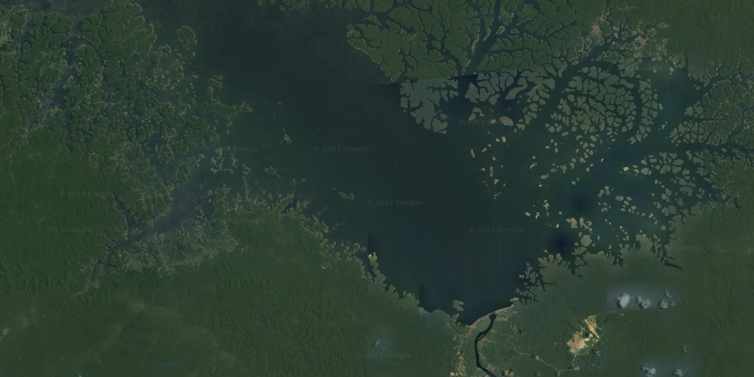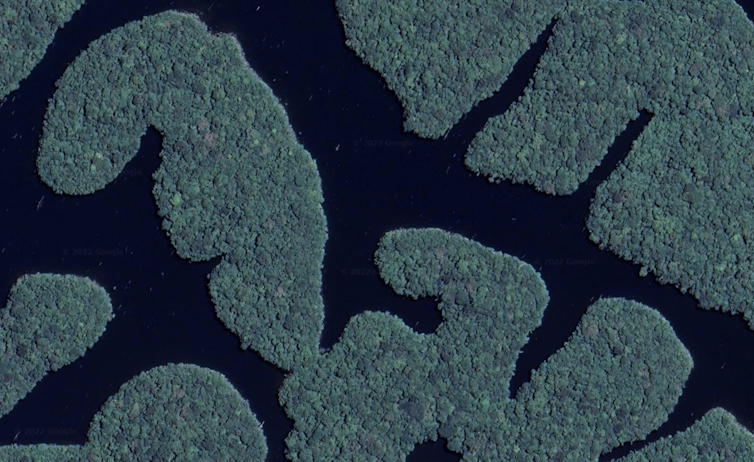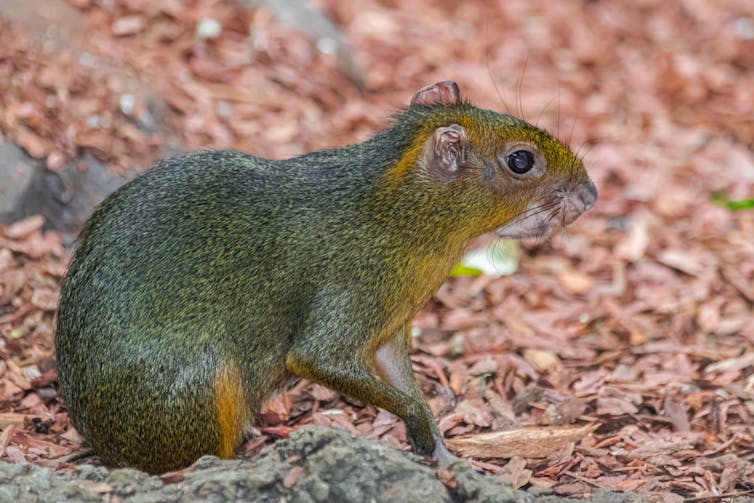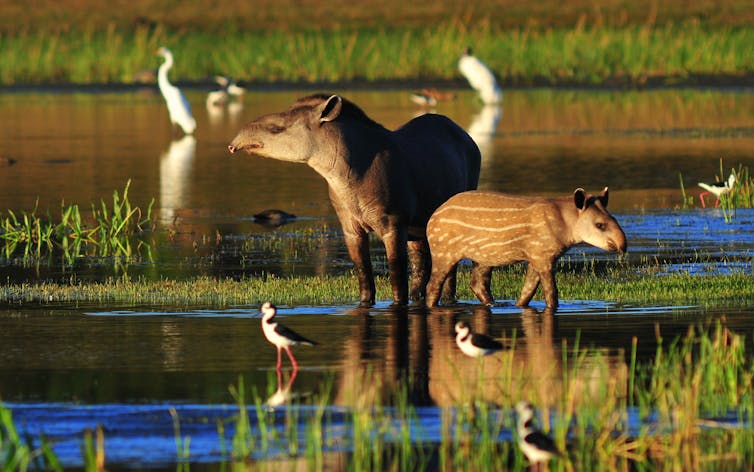
Built in the 1980s, the Balbina Dam is one of dozens of large dams across rivers in the Amazon Basin. Such dams might leave behind seemingly green patches of forest, but our new research has shown these disconnected patches of forest are no longer able to support thriving ecosystems.
The dam created one of the largest reservoirs in South America which stretches for almost 100km northwards through largely undisturbed rainforest. As this is a relatively hilly part of the Amazon basin, more than 3,500 islands formed as the reservoir filled up. What were once ridges or hilltops became insular forest patches.
For rainforest ecologists like us, the new landscape was an astonishing living lab – a way to test theories of what happens when a forest and its many animals are increasingly restricted to smaller and smaller patches.
We know that one of the main drivers of the ongoing biodiversity crisis is the loss of habitat and the fragmentation of the remaining areas. And we know that hydroelectric dams are one of the primary ways humans are disturbing these habitats, and that many developing countries (including those in the Amazon) are due to build many more dams.

In the new landscape created after a dam fragments the forest, we expect species to disappear faster from smaller islands that simply can’t sustain viable populations. And we expect other factors to play a role, such as whether a species is resilient and can cope with its habitat being transformed.
That’s the theory, at least. And the Balbina Dam gave us a perfect chance to see it in practice.
22 forest islands, 608 species
Over the past decade or so, scientists from many different institutions have made huge efforts to investigate which species are vanishing and which are persisting in the Balbina reservoir. In this study, we were able to compile those efforts.
In particular, we studied 22 forest islands of varying sizes. We also looked at three nearby sites that were connected to the main forest and weren’t islands, which we considered as a baseline reflecting the scenario before damming. We recorded 608 species representing eight biological groups: medium and large mammals, small mammals (excluding bats), diurnal lizards (active during the daytime), understorey birds, frogs, dung beetles, orchid bees and trees.
Our results are now published in Science Advances. We found that just a few larger islands held most of the diversity and had complete or nearly complete species assemblages. Meanwhile, smaller islands suffered. There, only more adaptable species like armadillos or rodent acouchis were able to survive for over three decades. These medium-sized animals can occupy relatively small areas. In contrast, bigger mammals such as tapirs and jaguars need more space, and might have vanished even from mid-size islands.

We also found widespread and non-random cases of species going extinct on individual islands. Bigger species were generally more likely to go extinct, but this varied across different groups of plants, vertebrates and invertebrates. For instance, the largest species of orchid bees Eulaema bombiformis or Eulaema meriana were also widely distributed across the landscapes. This was also the case for large understorey bird species, whereas the pattern was opposite for frogs, with the smallest species being more widely distributed.

Most of the islands created by Balbina Dam, like those in other reservoirs containing forest islands elsewhere in lowland tropical forests, are relatively small. Indeed, 95% are smaller than a square kilometre. These islands proved able to sustain low levels of biodiversity, which further has major implications for ecosystem functioning.

While the Amazon is famous for its extraordinary diversity, when we actually visited these islands we were struck by how they were dominated by species of animals and plants that were generalists and can be found elsewhere, with the forest-dependent specialist species found on the mainland and in the large islands almost nowhere to be seen.
Plans to develop hydropower across lowland tropical forests mean we expect this process to happen more and more in the aftermath of river damming. With this in mind, we recommend future hydroelectric projects should avoid flooding large expanses of forest and creating lots of small islands. This would minimise biodiversity loss and help ecosystems to keep functioning. Finally, biodiversity loss should be weighed alongside other environmental costs in future assessments of whether damming the world’s mega-diverse tropical rivers is really worth it.
Ana Filipa Palmeirim, Postdoctoral Researcher, TROPIBIO Project, Universidade do Porto; Carine Emer, Associated Researcher, Biology, Rio de Janeiro Botanical Garden Research Institute, and Carlos Peres, Professor of Tropical Conservation Ecology, University of East Anglia
This article is republished from The Conversation under a Creative Commons license. Read the original article.










